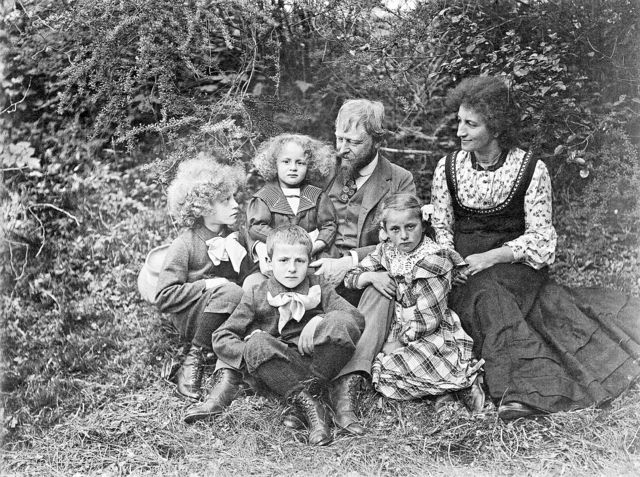
Childhood and Youth
1901–1919
Alberto Giacometti is born on 10 October 1901 in the mountain village of Borgonovo near Stampa in the Val Bregaglia, canton of Graubünden. His father is the well-known Post-Impressionist painter Giovanni Giacometti (1868–1933); his mother Annetta Giacometti-Stampa (1871–1964) comes from one of the valley’s landed families. Alberto’s brother Diego is born in 1902. 1904 sees the birth of his sister Ottilia and the family moves to Stampa; his brother Bruno is born in 1907.
From 1915 to 1919 Giacometti is a pupil at a boarding school in Schiers, where a small studio is set up for him. During 1918, both here and at home, he produces his first masterful drawings. In autumn 1919 he begins studying art in Geneva, attending the École des Beaux-Arts and the École des Arts Industriels, but drops out in 1920.
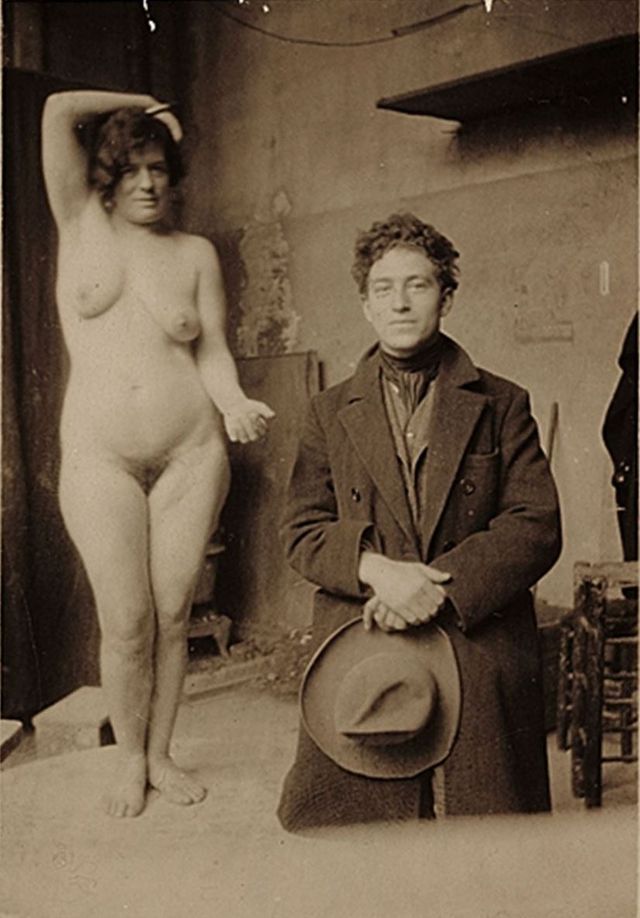
Training
1920–1924
In spring 1920 his father takes him to the Venice Biennale, where Giacometti is profoundly impressed by the works of Jacopo Tintoretto and Giotto. That autumn he sets off for Florence, where he is particularly fascinated by an Egyptian head in the Archaeological Museum. It is, as he later writes, the first sculpture he has seen that appears ‘lifelike’. Giacometti travels on to Rome, where he stays until summer 1921, living with relatives and pursuing his studies. In autumn 1921 he accompanies an older Dutch archivist to the Tyrolean Alps and witnesses his sudden death, a traumatic event from which Giacometti never entirely recovers.
In January 1922 Giacometti arrives in Paris. He enrols in the life drawing and sculpture classes of Antoine Bourdelle (1861–1929) at the Académie de la Grande Chaumière. In summer he spends extended periods in Stampa and Maloja, where he will frequently return throughout his life.
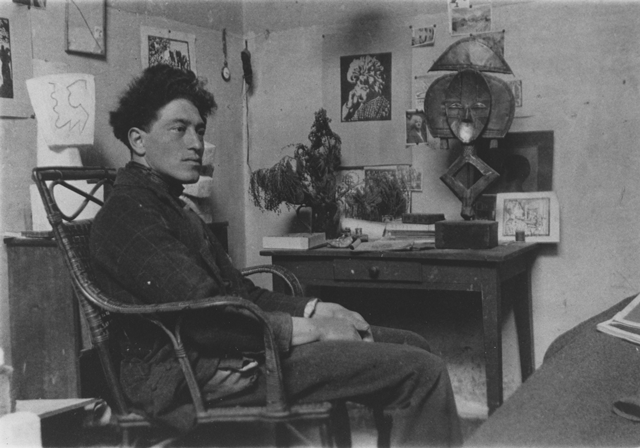
Towards the Avant-garde
1925–1929
Dissatisfied with his figural works, Giacometti begins experimenting with the forms of Cubism and African art. In 1925 he makes his début at the Salon dʼAutomne with the Torso (see GS 001 and GS 002). That same year his brother Diego comes to Paris; he will remain at Alberto’s side as his assistant and model for the rest of his life. In 1927 the pair move into the studio on Rue Hippolyte-Maindron where Giacometti will live and work to the last.
Summer sees the creation of a number of busts of his father and mother. In winter 1928–29 a process of reduction leads to the Gazing Head and other plaque sculptures (see GS 010–GS 014). These are very well received in the artistic and literary community and secure Giacometti admission to the leading avant-garde circles. He meets André Masson, Hans Arp, Joan Miró, Max Ernst and Alexander Calder, and soon encounters Pablo Picasso as well as Surrealist writers such as Louis Aragon and Georges Bataille. The poet and ethnologist Michel Leiris writes the first, ground-breaking essay on Giacometti in the journal Documents.
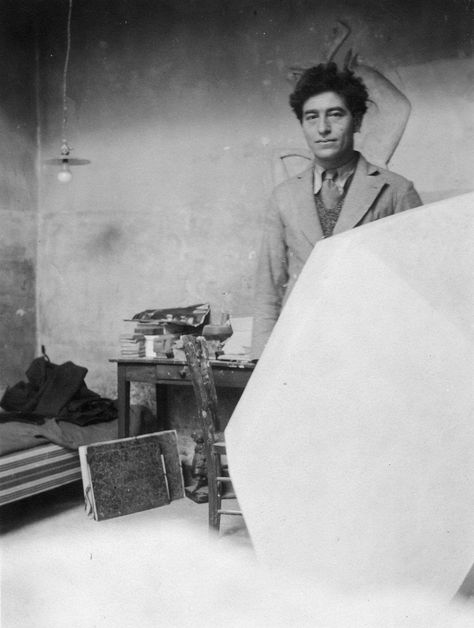
With the Surrealists
1930–1934
In spring 1930 Pierre Loeb stages the exhibition ‘Miró – Arp – Giacometti’ at his gallery in Paris. He exhibits the Suspended Ball (see GS 019), which captivates André Breton and Salvador Dalí so much that they invite Giacometti to join their circle of Surrealists.
In 1930 Giacometti begins collaborating with Jean-Michel Frank, a designer of interiors for the ‘beau monde’, and produces objects such as vases, lamps and sconces to accompany his designs. That same year the Surrealists’ most important patron, the Vicomte de Noailles, commissions Giacometti to produce a large sculpture for the garden of his summer residence on the Côte d’Azur. This is probably what motivates Giacometti to develop the ‘cage sculptures’ into the ‘projects for squares’ (see GS 042 and GS 043).
In May 1932 the Galerie Pierre Colle stages Giacometti’s first solo exhibition. Back in Stampa and Maloja, Giacometti models busts and paints portraits of his father. His father dies on 25 June 1933. Invisible Object and Cube (see GS 025 and GS 298) are Giacometti’s last Surrealist sculptures. The return to working with models leads in early 1935 to his exclusion from the Surrealist group.
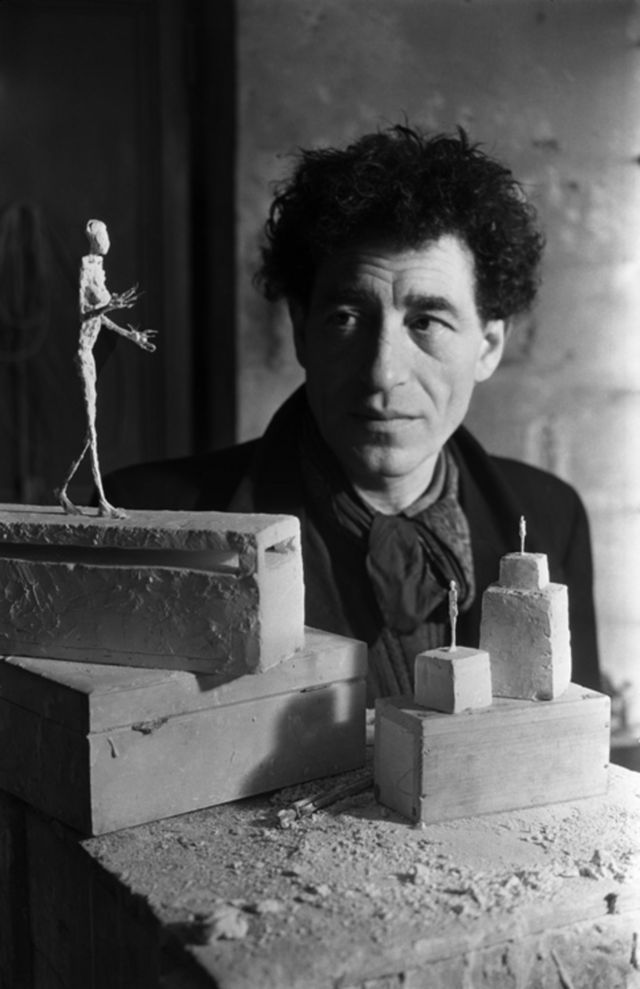
Crisis years
1935–1945
Giacometti continues producing his realistic studies of heads; his brother Diego and professional model Rita Gueyfier sit for him as, from 1936, does his friend Isabel Delmer. He continues to explore ancient art, especially Egyptian and Mesopotamian sculpture.
The following year his sister Ottilia dies shortly after giving birth to her son Silvio. Giacometti embarks on his experiments in capturing the appearance of a person far away, which lead him to produce small figures of ever-decreasing size. The increasingly large pedestals serve to accentuate the impression of distance.
From 1942 to 1945 he lives in Geneva, where his mother is bringing up her orphaned grandchild. Giacometti meets regularly with exiled literary figures from Paris and begins writing texts for Albert Skira’s journal Labyrinthe. During this period he meets Annette Arm (1923–1993), whom he goes on to marry in 1949. In September 1945, after more than three years, Giacometti finally returns to his Paris studio, which Diego had been looking after for him.
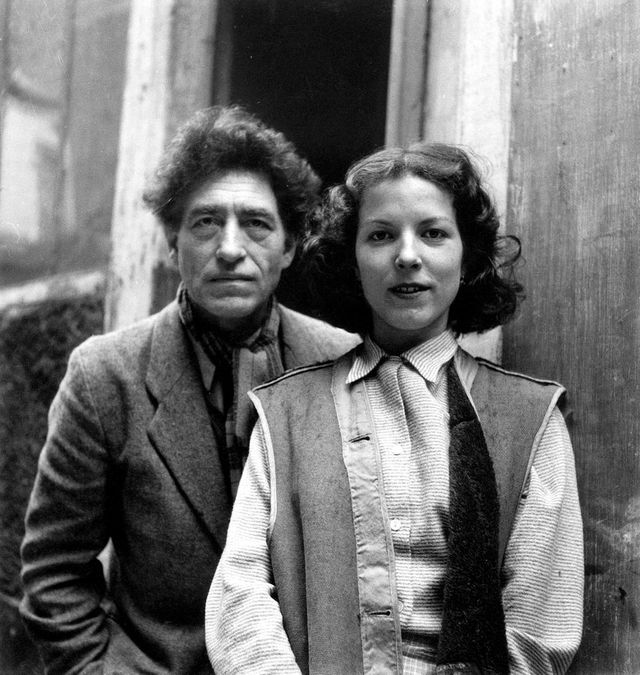
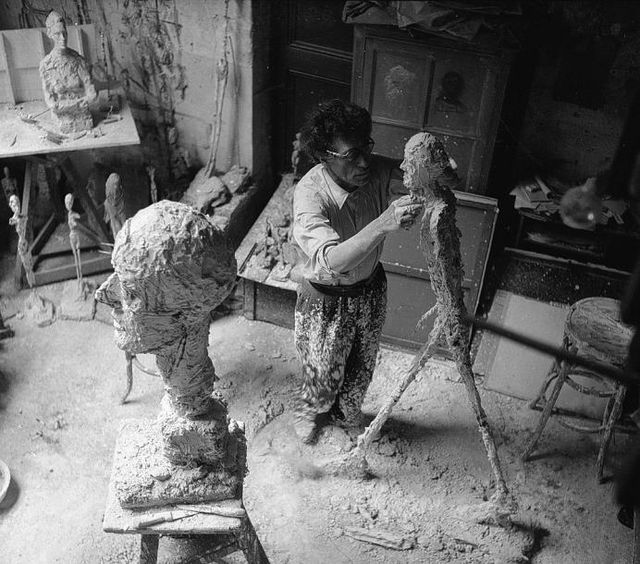
Mature Years
1946–1958
Back in Paris, Giacometti continues to work on the small figures. He works through his war experiences in the fragment sculptures, notably The Hand (see GS 028). While at the cinema he undergoes an intense experience that heightens his perception of people and things in space to an almost visionary level of hyper-clarity. At the same time, drawing passers-by on the street leads him towards the tall, extremely slender figures that characterize his mature style.
In February 1948 Giacometti’s new works – cast in bronze – are shown at the Pierre Matisse Gallery in New York. The catalogue contains Sartre’s famous essay The Search for the Absolute. Numerous works follow, culminating in 1950’s The Chariot (see GS 044). In Europe they are exhibited for the first time at the Kunsthalle Basel in 1950.
Alongside the sculptures, the mature style also begins to show through in the paintings, where working from a model leads Giacometti to move beyond the extremely slender style. 1951 sees the first exhibition by his Parisian gallerist Aimé Maeght. Giacometti meets the writer Jean Genet, who will later publish an influential text about him.
Following smaller solo shows in Germany, London and New York in 1955, the first major retrospective is staged at the Kunsthalle Bern in 1956. Here and at the Biennale in Venice Giacometti presents the Women of Venice series, a group of standing women that come to epitomize his style.
In autumn 1956 Giacometti begins to paint works inspired by the Japanese philosophy professor Isaku Yanaihara; this leads to a creative crisis and the final stylistic departure, involving a novel conception of the image. In 1958 Giacometti’s dealers Aimé Maeght and Pierre Matisse organize casts of numerous earlier works.
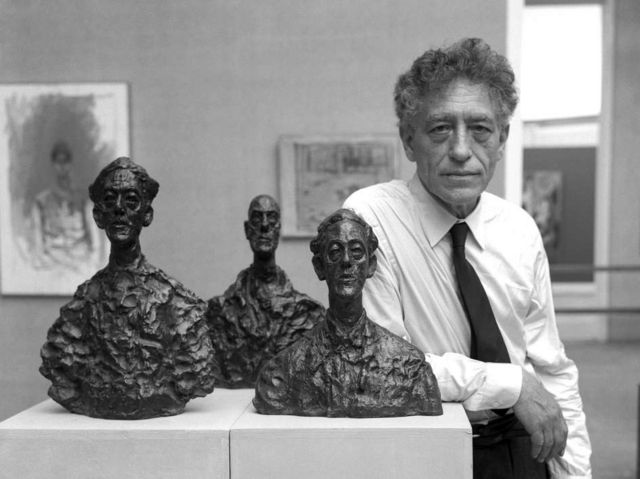
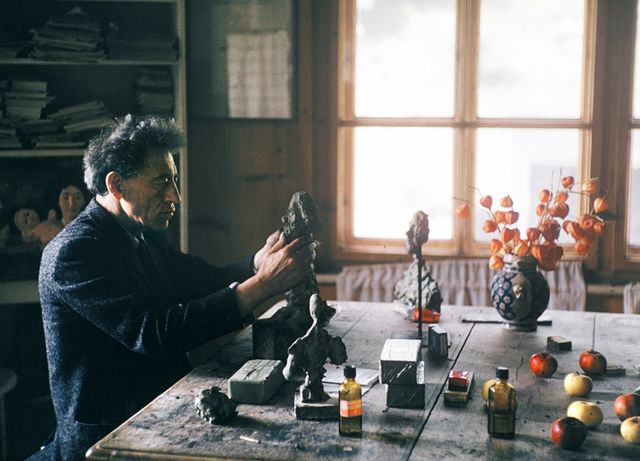
The Late Years
1959–1966
In 1959–60 Giacometti works on the large figures for the Chase Manhattan Plaza, which are cast in bronze in April 1960. At the instigation of the publisher Tériade he embarks on an extensive series of lithographs of his Parisian milieu. It is published in 1969 under the title Paris Without End.
1961 sees the first paintings of Caroline, a young prostitute whom Giacometti had met in Montparnasse. He will continue to produce numerous portraits of her until 1965; they mark the high point of his new approach to representing reality. In 1962 Giacometti takes part in the Venice Biennale, exhibiting both as a sculptor and as a painter, and is awarded the grand prize for sculpture. That same year sees a large-scale exhibition at the Kunsthaus Zürich.
In 1963 Giacometti undergoes a major operation for stomach cancer. While convalescing he spends more time than usual with his mother in Stampa, producing many drawings and lithographs of her. She dies in January 1964. 1965 sees Giacometti honoured with numerous accolades and major exhibitions, including at the Tate Gallery in London, in Denmark and at the Museum of Modern Art in New York, to which he travels despite his failing health.
After five years of negotiations the Alberto Giacometti Foundation is established in Zurich on 16 December 1965. Thanks to the Basel gallerist Ernst Beyeler and Hans Grether it has acquired the extensive Giacometti collection of Pittsburgh industrialist G. David Thompson.
Alberto Giacometti dies at the cantonal hospital in Chur on 11 January 1966. He is laid out in the studio in Stampa and buried in the cemetery of San Giorgio near Borgonovo.
